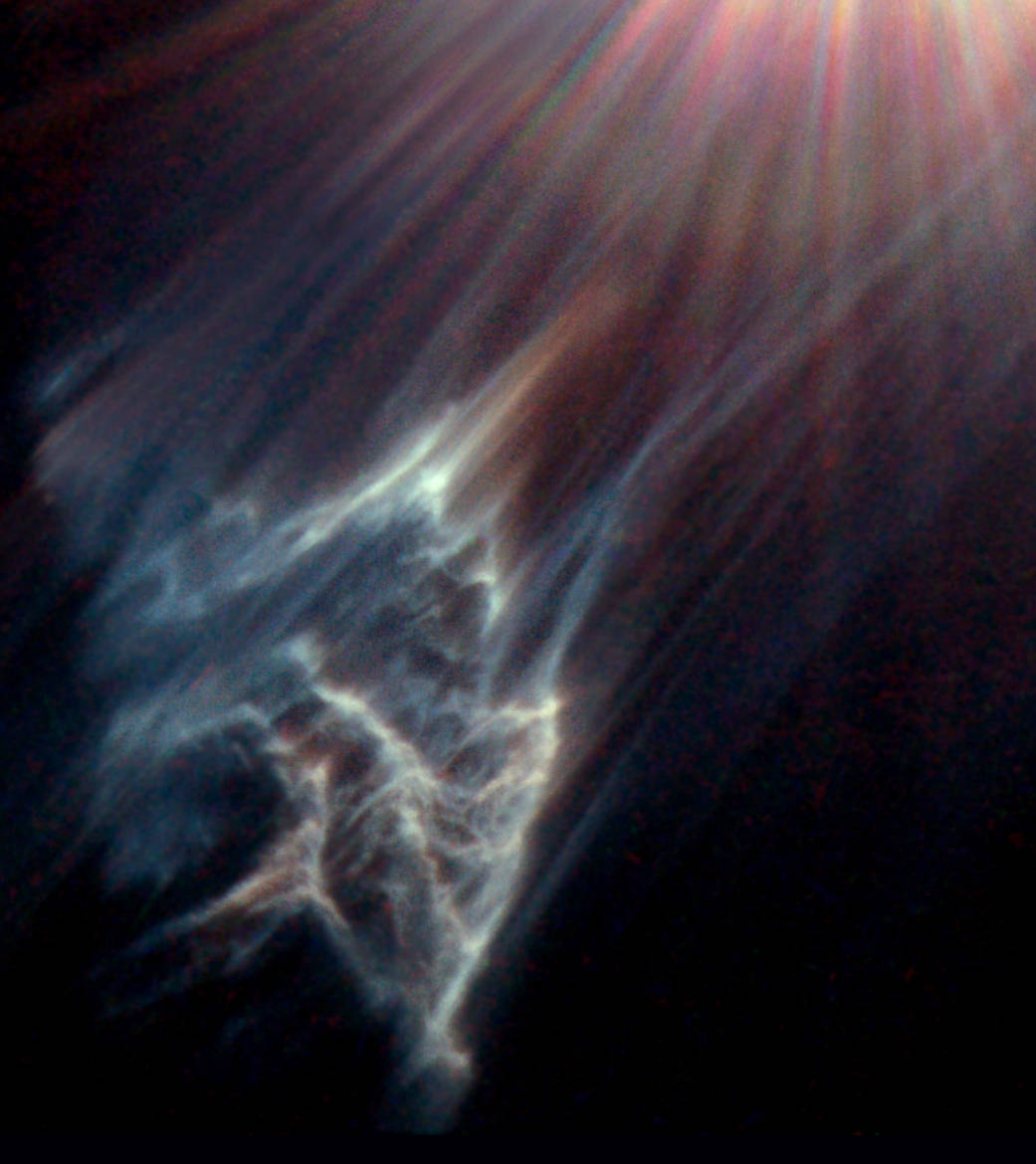In the famous Pleiades star cluster, a star’s light slowly destroys a passing cloud of gas and dust. The star, Merope, lies just off the upper right edge of this image taken by the Hubble Space Telescope.
The cloud, known as IC 349, and the star have been in existence for millions of years. In the past 100,000 years, however, part of the cloud has by chance moved so close to the star – only 3,500 times the Earth-Sun distance – that the star’s light affects the cloud’s dust in an unusual manner.
Pressure of the star’s light significantly repels the dust in the reflection nebula with smaller dust particles being repelled more strongly. Eventually parts of the dust cloud have become stratified and point toward Merope, with the closest particles being the most massive and so the least affected by the radiation pressure. A longer term result is the general destruction of the dust by the energetic starlight.Image credit: NASA/STScI/George H. Herbig and Theodore Simon (IfA, U. Hawaii)
1 min read


























